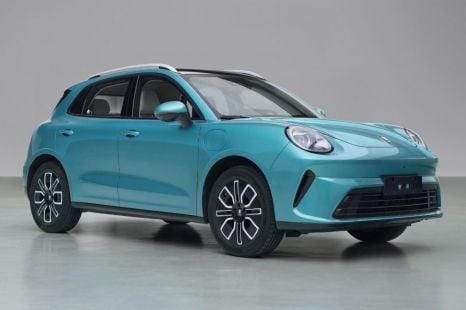

William Stopford
GWM is finally launching an electric SUV as Ora Cat breaks cover
2 Days Ago
While the price of the latest Golf R has skyrocketed, it remains the undisputed daily hot-hatch king for under $70,000.
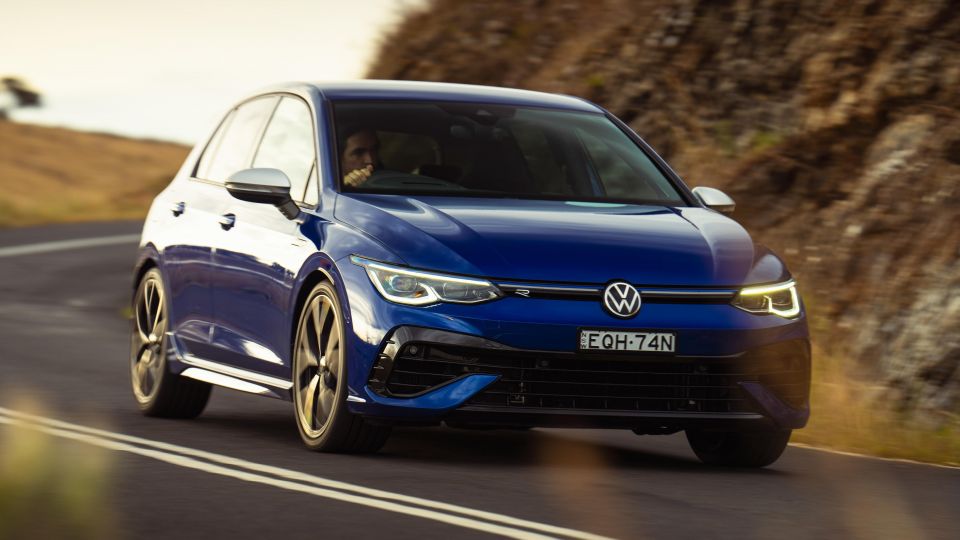


Quickly see how this car stacks up against its competition. Select any benchmark to see more details.
Where expert car reviews meet expert car buying – CarExpert gives you trusted advice, personalised service and real savings on your next new car.
Before anyone gets too confused, let’s set the record straight – the 2022 Volkswagen Golf R is based on the eighth-generation Golf, but only the fifth to wear the flagship R badge in 20 years of production.
While I missed a stint in the original Mk4 R32, the Golf Mk5 R32 has been an all-time favourite of mine from the very first moment I laid eyes on it, let alone when I finally got behind the wheel. The highlights were the centrally-mounted dual exhaust tips, all-wheel drive and that scintillating 3.2-litre V6 engine with its unique burble. I can still hear it now.
Some said things went decidedly south from the moment Volkswagen ditched the naturally-aspirated six-pot for the more powerful 2.0-litre turbocharged four-cylinder engine wedged under the bonnet of the Golf Mk6 R in 2010.
What had been such a universally loved performance hatch recipe had been shelved in the interests of more power, greater efficiency and less weight. Compelling reasons for sure but enthusiasts argued the driving experience was now less involving despite packing more punch.
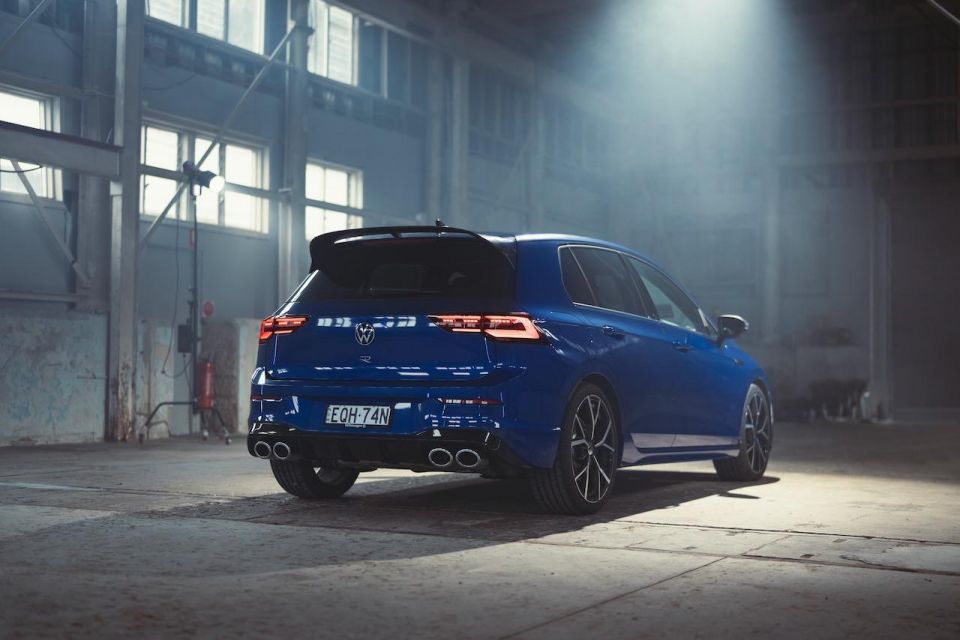
Mind, not a lot more power. While the first Golf R made 177kW, the second iteration in 2005 (still with its NA V6 and a tricky dual-clutch gearbox from mid-2003), upped the ante to 184kW.
When the Mk6 Golf R successor was unveiled at the 2009 Frankfurt Motor Show with a spanking new four-pot turbo, power had been bumped to 188kW in Australia (and up to 199kW for European markets).
By the time the Mk7 Golf R hit the streets in 2014, it was making 206kW. At the same time Volkswagen debuted two new firsts for the model; the Wolfsburg Edition and an R Wagon, both with standard DSG.
Power jumped to 213kW when the ‘Mk7.5’ R update landed in 2017, followed by a bunch of special editions, including the Grid Edition, another Wolfsburg, then the Special Edition packing R Performance options and rounding out with the aptly named Final Edition with Colour Concept special colours in 2020.
That’s quite an evolutionary tale and one that introduces the new Golf R as the most powerful Golf ever made with no less than 235kW of power and 400Nm of torque for the five-door hatch, and 420Nm for the upcoming Golf R Wagon.

Those are the same specs as Europe for the first time after the Aussie market has been effectively de-classified as a ‘hot’ zone and the lower power output that’s always been associated with said classification. It’s worth noting the hatch’s slightly detuned torque figure is down to the removal of a petrol particulate filter (PPF) in order for the local arm to secure a timely first allocation.
While I’ve always loved the extra grunt and sublime wet weather grip of the Golf R, I’ve also felt the less powerful front-drive GTI was the car you wanted for a road drive in Targa High Country – on dry roads of course. More driver feedback, I thought.
Different buyer of course. The GTI generally skews younger while the Golf R attracts the older, more sophisticated buyer with a bit more coin to spend. It’s always avoided the boy racer tag thanks to its largely understated styling and more luxurious fit-out.
For the latest Mk8 Golf R, it’s largely the same tried-and-true formula that’s been applied, only this time there’s more of everything – more firepower, more tech, more kit and a lot more money if you want one.
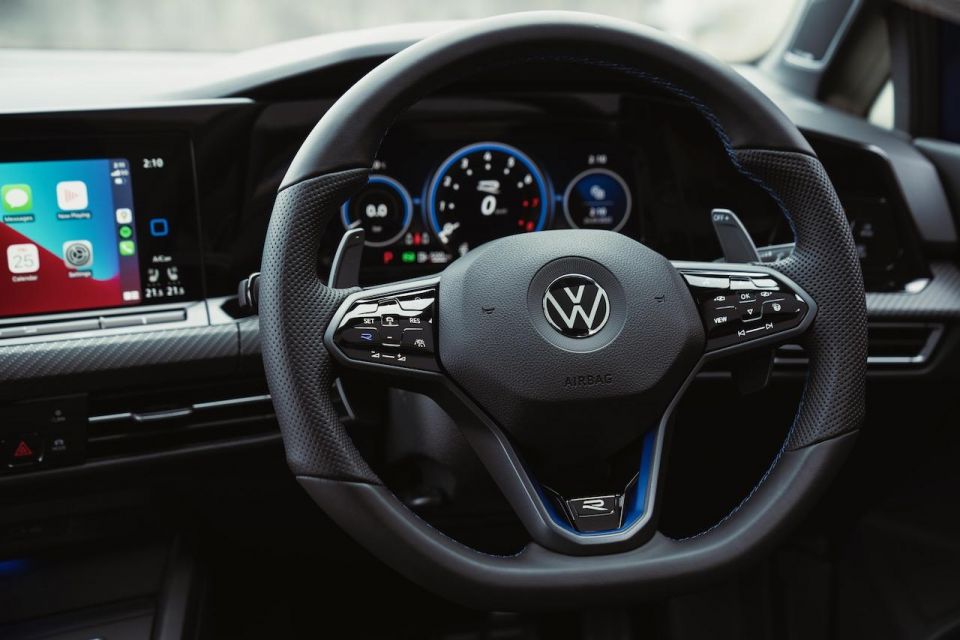
In fact, the new Golf R will cost you around $10,000 more than its predecessor, but now with torque vectoring for the first time as well as Drift mode – which works a treat.
If anything, the new Golf R looks and feels like a more upmarket proposition with its new, more sophisticated front bumper incorporating a prominent spoiler and bigger air intake.
For the first time there’s IQ.Light Matrix LED headlights with scrolling indicators and a blue grille strip, which turns white at night as you approach the car. It’s a cool feature as is the full-strength light show that greets you each time you hit the unlock button on the key fob.
The new-look R badge can now be seen on grille, front guards and tailgate. All of this sits well with Golf R’s lowered chassis and more prominent body-coloured extended side sills. You can’t miss the mandatory matte chrome door mirrors, either.
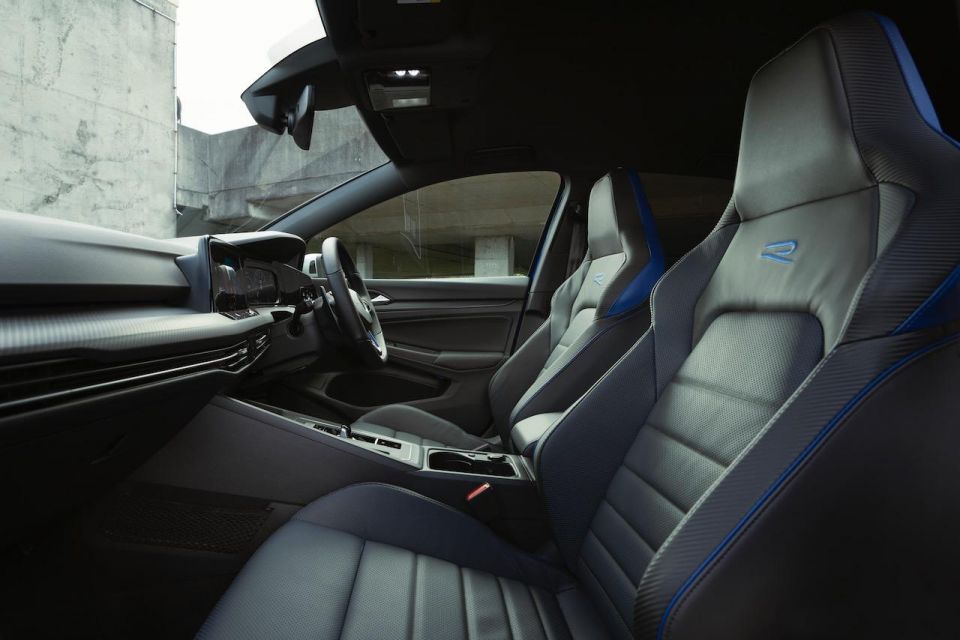
However, it’s at the rear where Golf R has always made its loudest statement and nothing has changed in that regard other than it’s now even more resolved. There’s a proper rear diffuser that neatly integrates the quad chrome exhaust tips, while the new-look two-tier roof spoiler looks properly motorsport-derived – signalling real intent in the go department.
Capping it all off are a set of 19-inch ‘Estoril’ lightweight alloy wheels that cloak the blue-painted brake calipers complete with R insignia. It looks a treat, especially if your Golf R is painted in Lapiz Blue metallic like our tester.
Inside, you’ll find the same all-digital cockpit that was introduced with the Mk8 Golf, but with distinct R elements like Nappa leather sports seats, plenty of blue trim highlights, and a superb leather-wrapped, flat-bottom steering wheel complete with a blue-lit R button, where a single haptic touch will take you to Race mode.
Still, the complete and utter expulsion of buttons and switches will likely invoke a love/hate relationship with what is otherwise a very pleasant place to be.
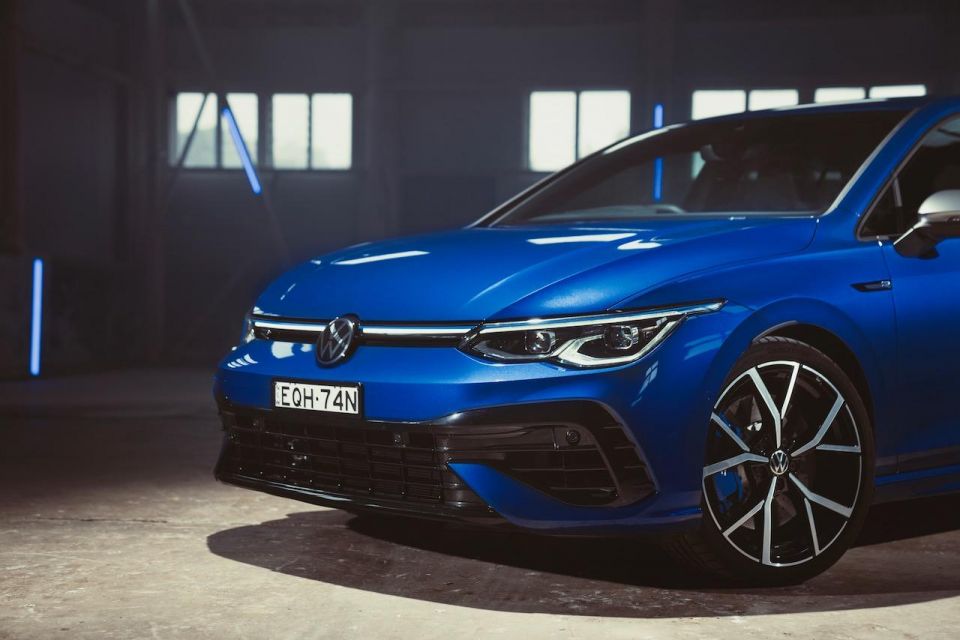
The new Golf R launches in Australia from $65,990 plus on-road costs. It’s a significant price hike over its Mk7.5 predecessor, which wore a $55,990 price tag for the DSG just a year or so ago.
There’s also a new Golf R Wagon available priced from $68,990 excluding on-roads – an $11,000 premium over the Mk7.5 iteration.
Direct rivals to the Golf R offering similar levels of performance, features and refinement for comparable money have always been few and far between, but now they’re virtually non-existent unless you’re prepared to folk out even more for similar-sized weaponry from the luxury marques.
Take the latest Audi S3 that kicks off at $70,700 before on-roads. It’s got the same level of performance and a similarly extensive technology catalogue (remember the S3 and Golf R share DNA), and of course the four-ringed Audi badge going for it.
There’s also the BMW M135i xDrive, priced from $71,900 plus on-roads and formidably armed with way more torque than the Golf R for the same 4.8-second 0-100km/h sprint claim. There’s also a Pure version for $65,900 if you don’t mind losing some equipment.
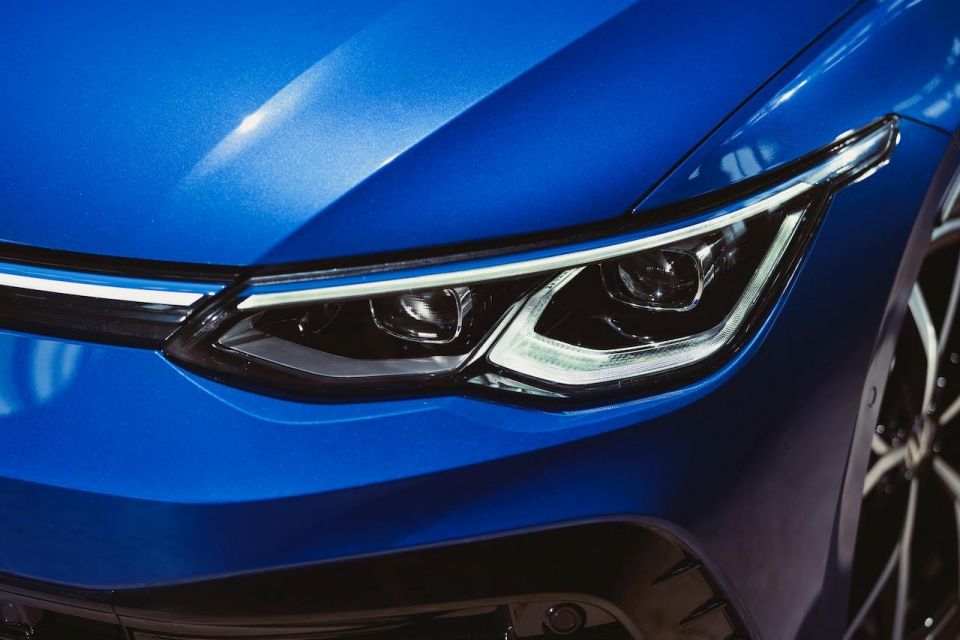


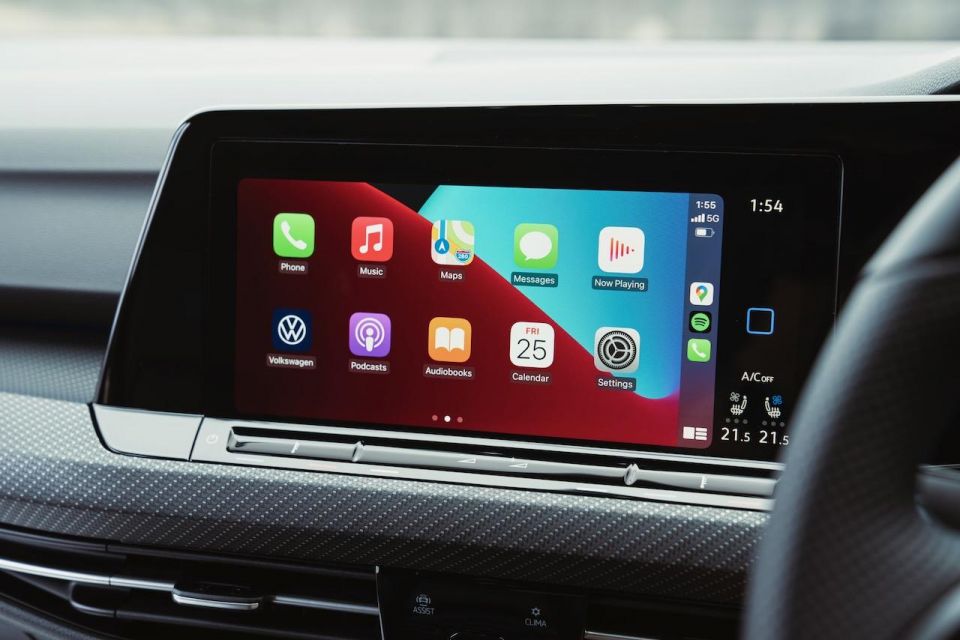
Buy your new car without the stress. It's fast, simple and completely free.

Great service from Travis and team, second time I have used this business would not hesitate to recommend them to anyone
Craig C.
Purchased a Ford Ranger in Sunshine Coast, QLD
CarExpert helped Craig save $7,224 on his Ford Ranger, now let us save you on your next new car.
Get your BEST priceGolf R highlights:
Options include:
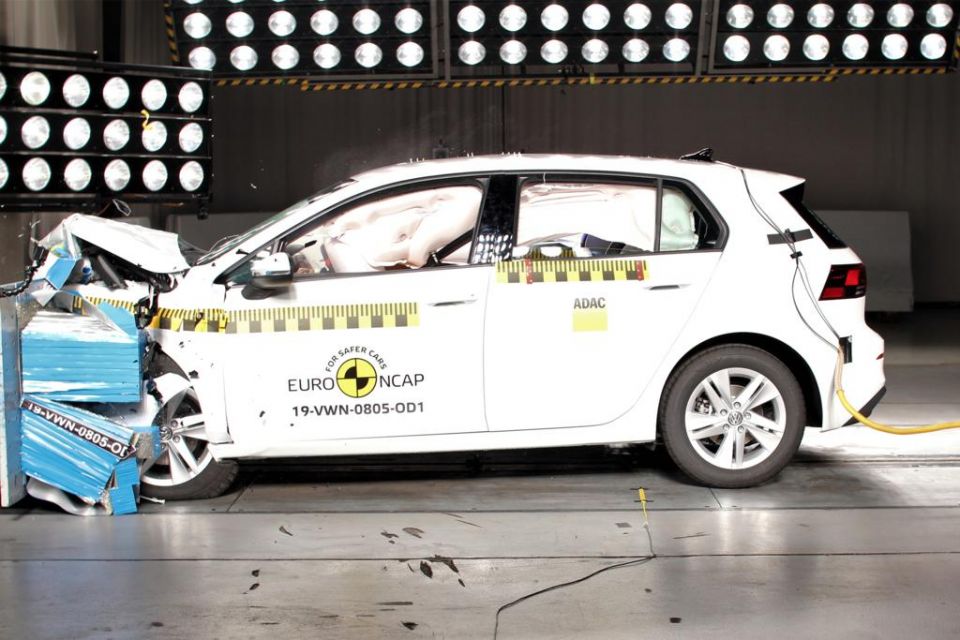
All versions of the Mk8 Volkswagen Golf wear a five-star ANCAP safety rating based on Euro NCAP testing in 2019.
It achieved 95 per cent for adult occupant protection, 89 per cent for child occupant protection, 76 per cent for vulnerable road user protection and 80 per cent for safety assist.
Moreover, the Golf R is equipped with 4Motion all-wheel drive with torque vectoring and comes with eight airbags as standard – incl. dual frontal as well as side chest and side head (curtain) airbags across both rows of seating.
Standard driver assistance features include:
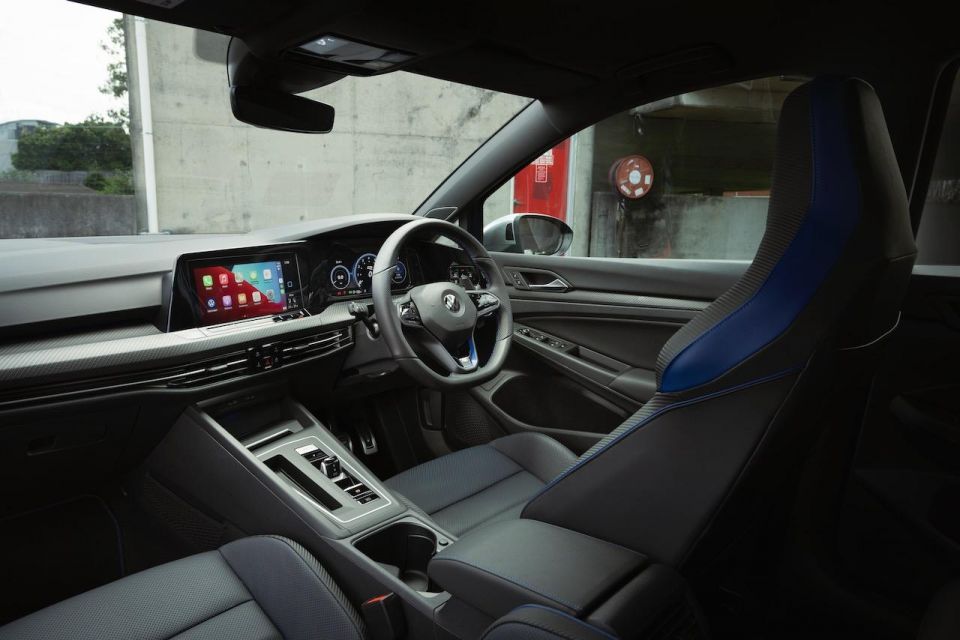
Good thing I like blue, especially given it’s a match for the aesthetically brilliant Lapiz Blue hero paint adorning our tester.
There’s quite a lot of it throughout the cabin, from the ambient lighting to the various trim accents on the steering wheel and all over the sports seats with integrated headrests. Speaking of the pews, the deep-set driving position has been a standout characteristic of factory-tuned Golfs from the very first GTI I drove in 1980.
The blue R button on the steering wheel is always lit for immediate access to Race mode regardless of what setting you dialled up previously. The wheel itself is perforated with extra-long paddle-shifters, instead of those tiny tabs we’ve had to put up with for years.
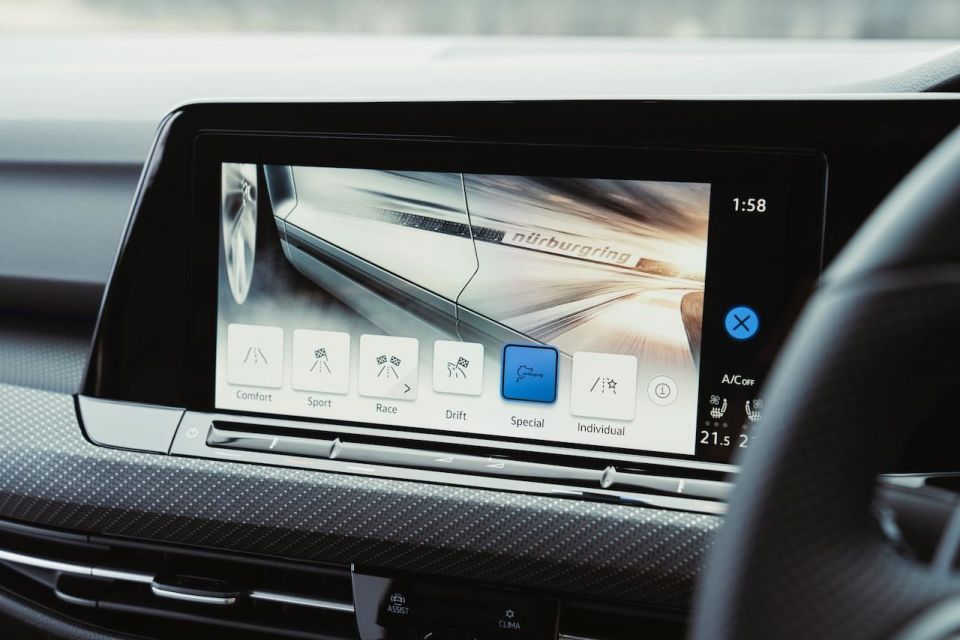


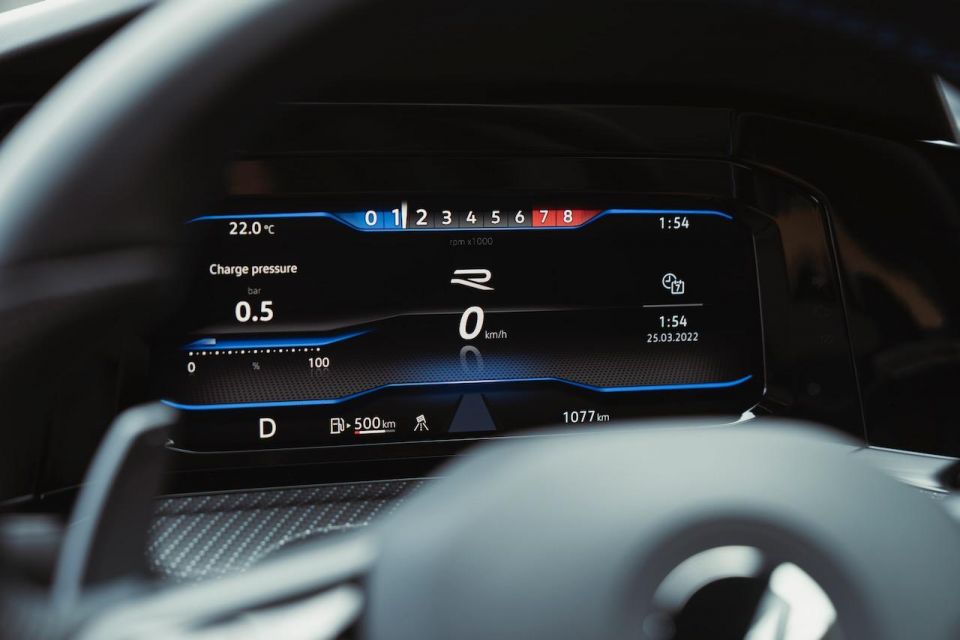
While both screens up front offer crystal-clear clarity as well as plenty of configurability, the absence of all manner of physical buttons and knobs for audio and climate controls can be a royal pain in the backside until you finally succumb to what is a flawed design and get used to plenty of swiping and haptic feedback.
The air-con vents are ultra-thin but seem to be no less efficient at cooling the cabin. If you need to adjust the fan speed or change the temperature, it’s easier to hit the shortcut button which brings it all up on the central screen. It’s easy enough but still unnecessarily fiddly.
I’ve become an unwitting fan of the Braun razor-style shifter, too, likely because it’s similar to that used in the latest Porsche 911 and it’s quick and convenient to access drive or reverse. Not even sure I’d go back to a traditional shift lever, either.
All of the surfaces at eye level are quality soft-touch materials, but below that there’s still a few cheap-looking plastics employed in the latest Golf R. At this price point, that’s mildly disappointing.
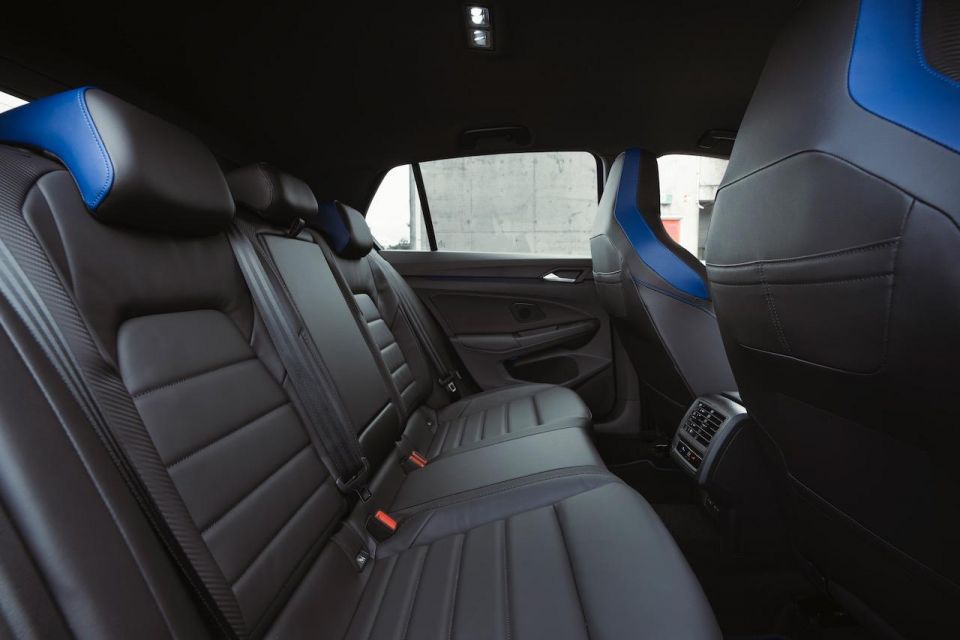
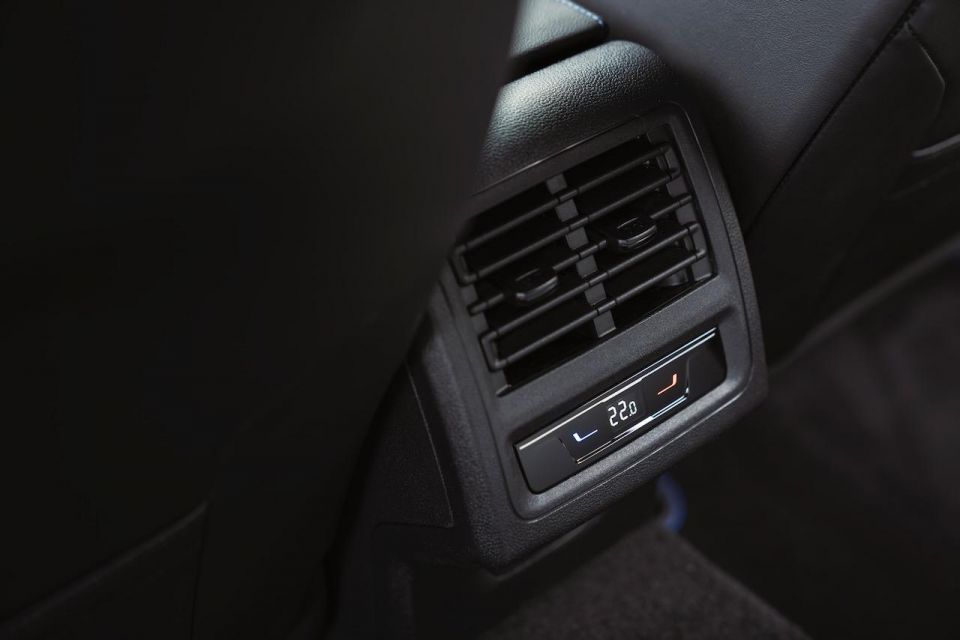
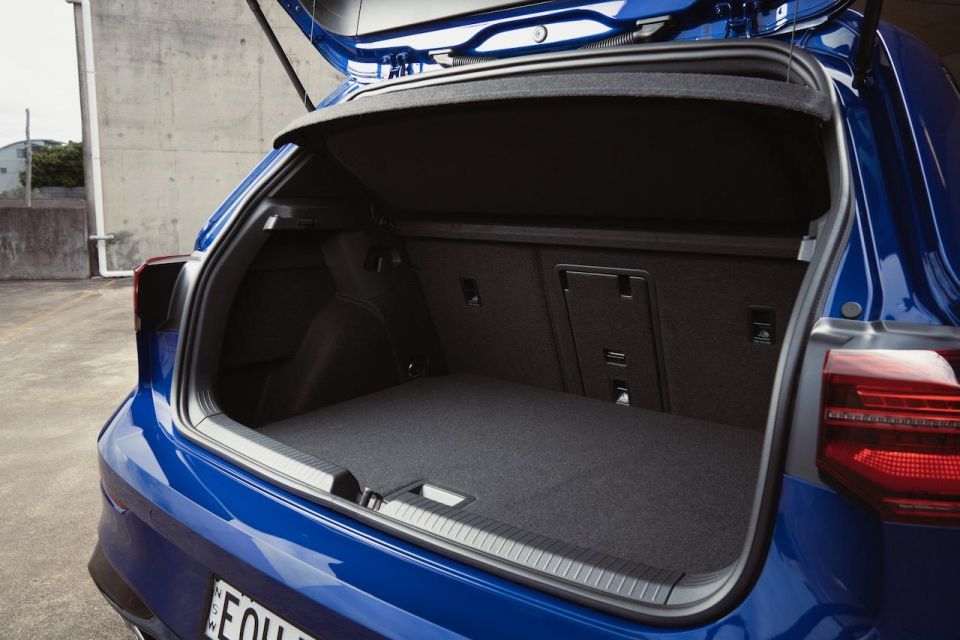
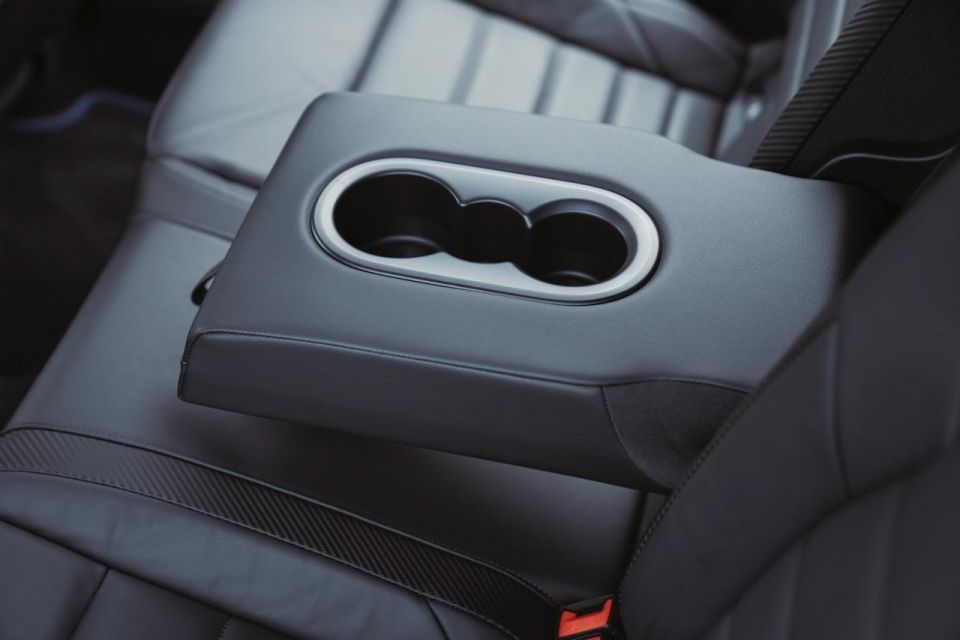
There’s an interesting faux-carbon weave material that looks to be a textured surface and yet it’s completely smooth to the touch. One of the nicer bits of trim in the cabin.
It might fall short of the class leaders when it comes to boot space (374L), but there’s plenty of cabin stowage up front. There’s a neat wireless charging pad at the very top of the console along with two USB-C ports in the same location.
Further aft are two cupholders and a decent-sized console box. The door bins are huge and there’s a useful glovebox if you need a bit more space to hide valuables.
Rear seat passengers get acceptable legroom, at least for my 175cm frame, and there’s temperature-controlled vents as well as a central armrest with cupholders. There’s also two USB-C ports back there in addition to phone holders in each seatback.
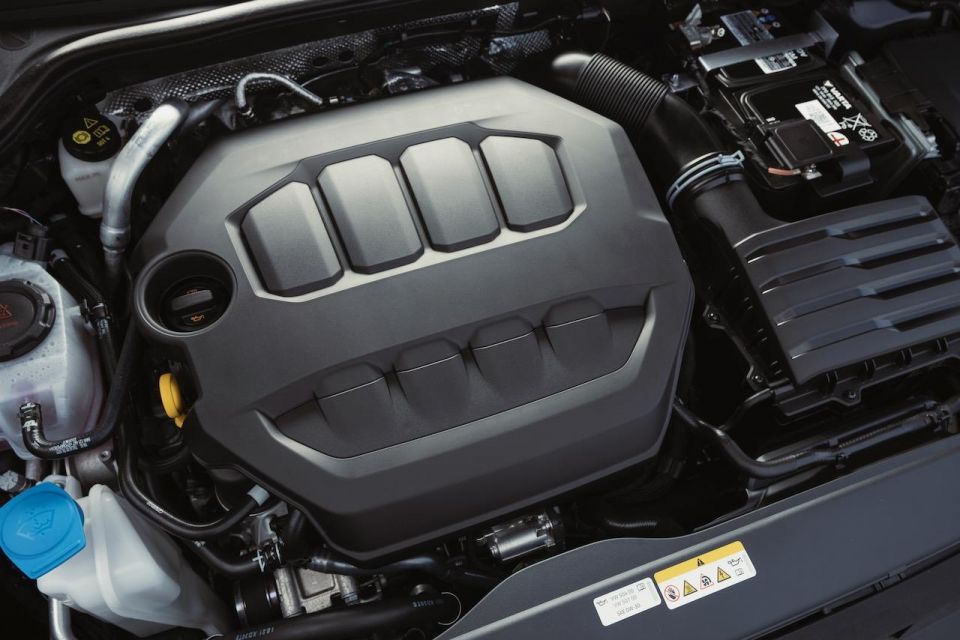
The EA8882.0-litre four-cylinder turbocharged petrol engine under the bonnet of the latest Golf R also carries the code ‘Evo4’ – as in fourth-generation.
It’s the most powerful-ever version of this ubiquitous unit, developing 235kW of power at 5600rpm, and 400Nm of torque between 2000-5600rpm using a traditional catalytic converter, while the PPF-fitted Golf R Wagon makes 420Nm.
The Evo4 engine actually uses smaller injectors (by 6mm), which allows for finer, more efficient atomisation between 200 and 350bar for increased power. Internal friction has also been reduced thanks to a new combustion chamber design and casting process. There’s less noise at load, too.
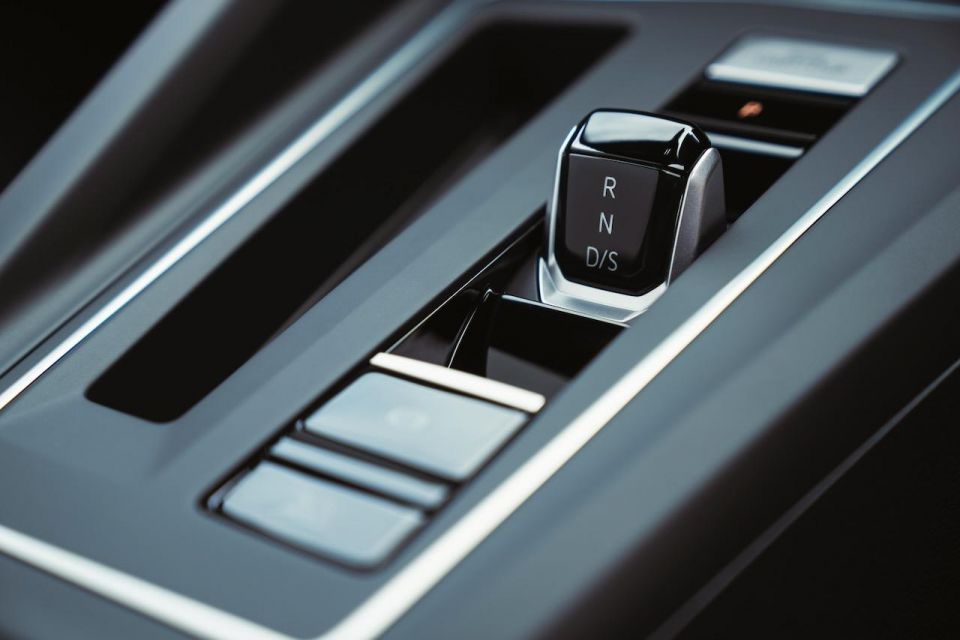
The engine is paired as standard in Australia with a seven-speed wet-type DSG dual-clutch auto (other markets also get a six-speed manual) and a torque-vectoring rear differential.
There’s also an e-diff up front to ensure the front end is kept in check when the car is being hustled along through the curves.
Performance is scintillating, with Volkswagen claiming 0-100km/h takes 4.8 seconds using launch control – 0.1 seconds slower than the 420Nm tune of the European-market Golf R hatchback. Some say it’s quicker than the numbers suggest.
Volkswagen claim fuel use of 7.8L/100km on the combined cycle, with 98 RON premium unleaded required for the 55-litre fuel tank.

Where expert car reviews meet expert car buying – CarExpert gives you trusted advice, personalised service and real savings on your next new car.
It’s not a car you immediately bond with, this latest Golf R. I know it’s not a boy-racer-kind-of-car but that doesn’t mean I don’t want to listen to a rorty exhaust note when there’s cause to just give it the beans.
Apparently, you can turn off the fake noise that’s amplified by speakers in the cabin, but it requires the user to navigate through a few menus before arriving at the ‘Pure’ engine sound button.
But I wasn’t listening intently enough during the presentation, so I just tapped the R button on the steering wheel each time, which takes you directly to ‘Race’ mode for even more of the fake stuff. I don’t mind it, really.
It’s even angrier if you hit the ‘Special’ mode with a map of the Nürburgring, just to paint the right picture for you. In this mode it amps everything up bar the suspension which is softer for rough sections and high-speed compressions – just like you get at the ‘Ring, or dare I say most of Sydney these days.
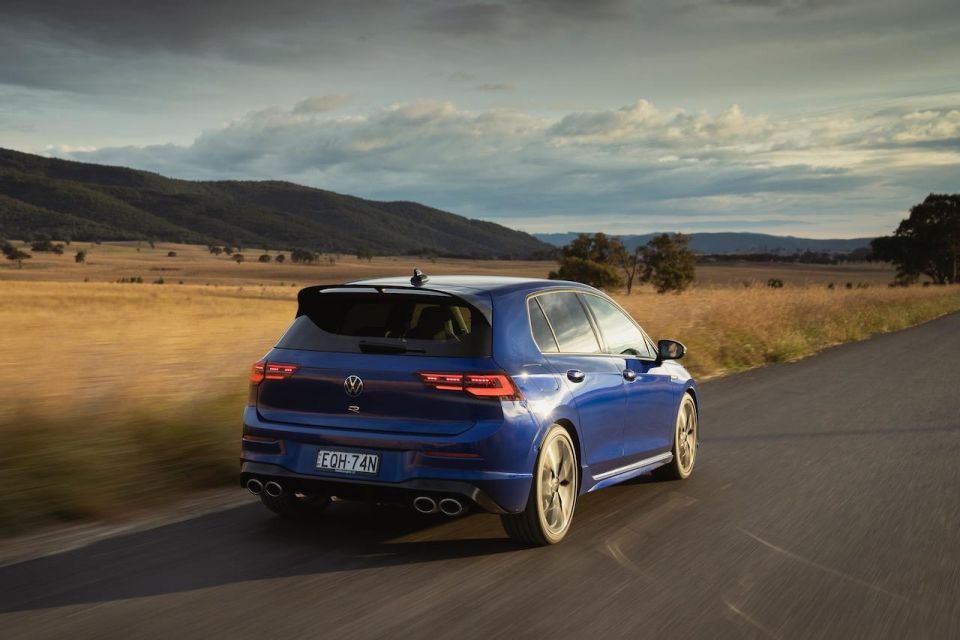
There’s no shortage of thrust off the line in the new Golf R. It pulls away with zero fuss and keeps on pulling until you run out of road with relentless shove, but driver feedback is all a bit numb at this point.
Don’t get me wrong, the steering is quick and the power assistance is dialled back to provide decent weighting (in Race mode at least), but you get the feeling it’s also masking some genuine feedback and directness when you’re cornering. It just doesn’t feel as precise as something like a Hyundai i30 N or Honda Civic Type R, but neither of those are all-wheel drive to be fair.
We also put down a few laps on the North Circuit at Sydney Motorsport Park and there’s no question about its ability to lay down a quick lap.
The chassis feels invincible, so it turns in early and holds the line through the faster corners perfectly then powers out with deft ease, thanks to the new all-wheel drive system that’s networked through the Vehicle Dynamics Manager (VDM) that seamlessly manages the extended diff locks, adaptive chassis control and torque vectoring.
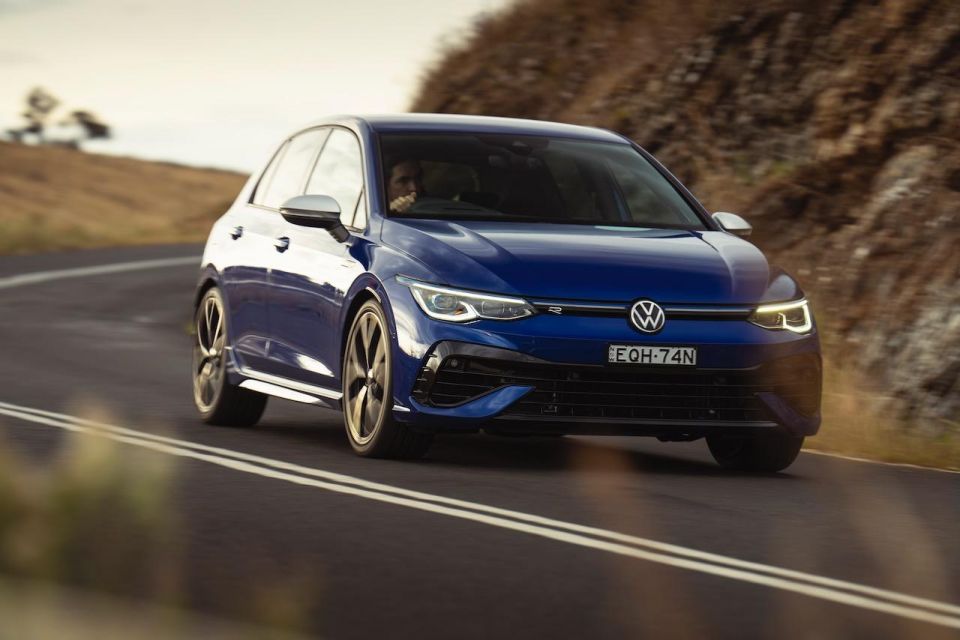
Back on the road and you get to experience the full breadth of Golf R’s adaptive chassis system. Even in Race mode there’s more than enough suspension compliance to for the car to soak up minor potholes and broken edges. It’s quite remarkable and in a league of its own in these conditions.
Mind, switching between comfort, Sport and Race (the stiffest setting) reveals distinct variations in stiffness and bump absorption, but the fact is you can drive around in the most aggressive setting and still the car rides well over average surfaces.
It’s still the same seven-speed wet-clutch DSG, but with shift-by-wire for this iteration, so it feels like there’s more separation of shift speed between the drive modes which is made more obvious on track. In Race, it won’t automatically upshift even if you’re using the paddle-shifters, so you might find yourself bouncing off the rev-limiter, occasionally. Good thing.
In the wet is where Volkswagen’s 4Motion all-wheel drive system really starts to shine. It’s quite incredible how much grip the Golf R musters even during heavy rain even on course chip surfaces.

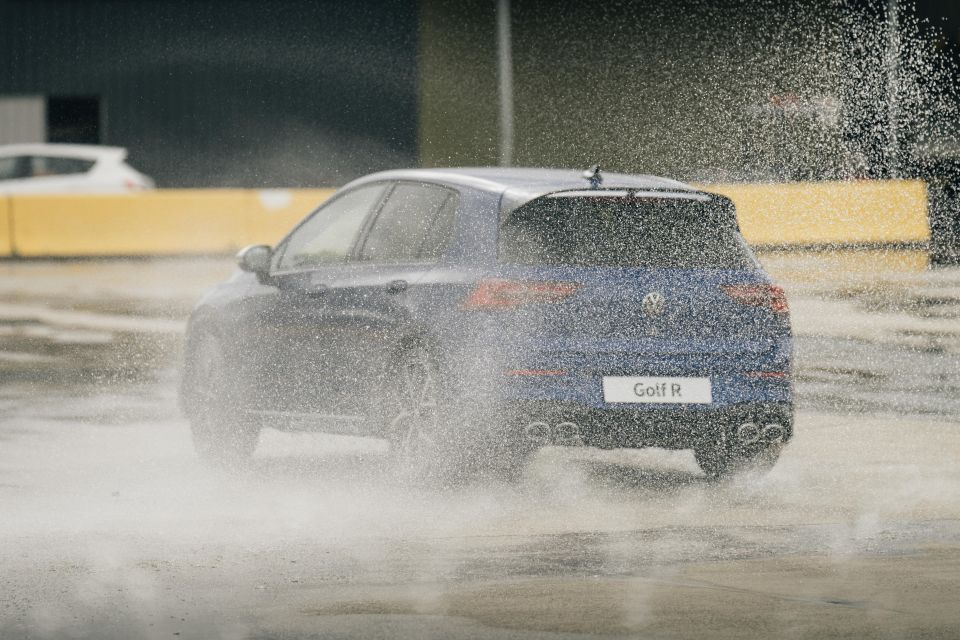
There’s no wheelspin or torque steer pulling out of left or right-hand junctions, or indeed at higher speeds on motorways. The Golf R has always been a showcase for wet-weather traction – now it’s even better.
The front brakes are ventilated and cross-drilled 357mm units and proved faultless on track despite multiple drivers and very little downtime between sessions. It’s impressive given the abuse they copped.
You’ll want to have a crack in the new Drift mode on the skid pan, too, if you’re attending a track day in the Golf R. We kicked off in Race, effectively to demonstrate just how much wet-weather traction the car is capable of. We then switched to ‘Drift’ with ESC in Sport – which allows enough slip angle to drift the car but it still wants to save you.
Turning ESC off even in Drift requires you to access a drop-down menu, but then it’s dead easy to keep a drift going even with a full throttle. It really does work a treat.
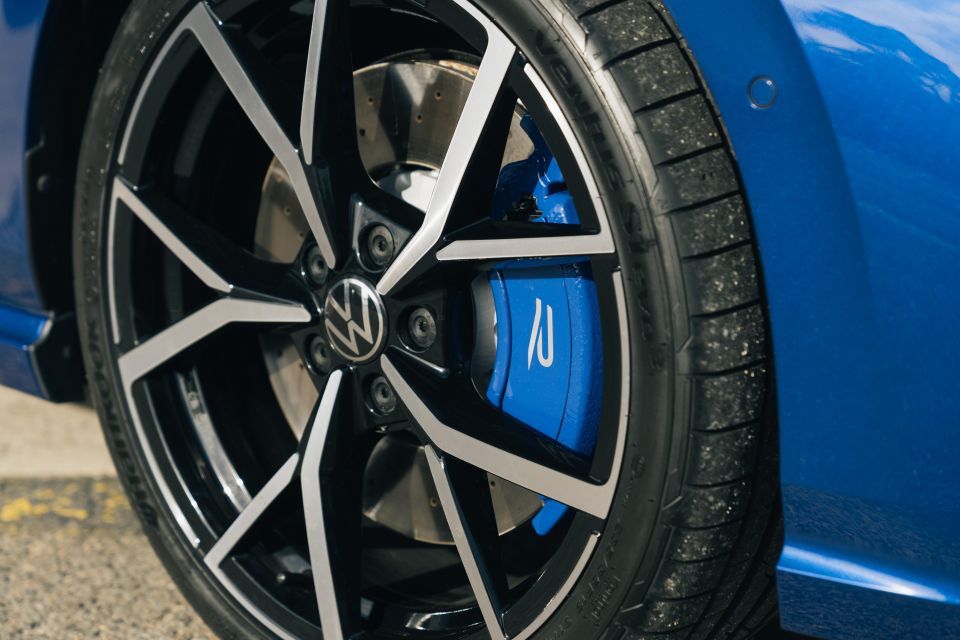
Volkswagen offers a five-year, unlimited-kilometre warranty across its entire passenger vehicle range, including the Golf R.
Also included is one year of roadside assistance, which gets extended by a year each time you service your car with a participating Volkswagen dealer for up to 10 years from the original new car warranty start date.
Speaking of servicing, intervals are 12 months or 15,000km – whichever comes first.
Volkswagen offers a three-year service plan for the Golf R priced at $1700, while the five-year plan is $3000.
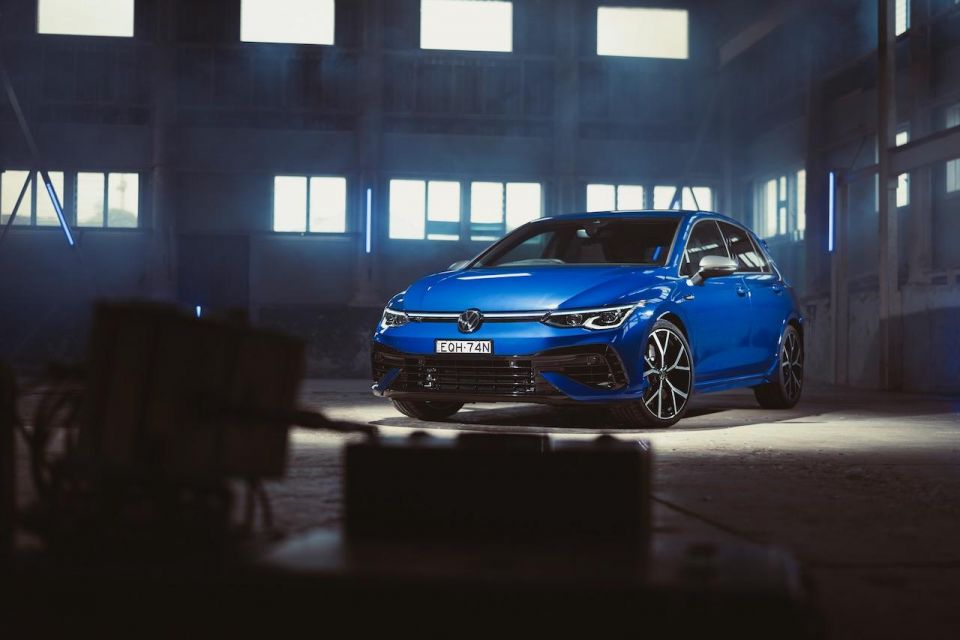
Buy your new car without the stress. It's fast, simple and completely free.

Great service from Travis and team, second time I have used this business would not hesitate to recommend them to anyone
Craig C.
Purchased a Ford Ranger in Sunshine Coast, QLD
CarExpert helped Craig save $7,224 on his Ford Ranger, now let us save you on your next new car.
Get your BEST priceWhile the price of the latest Golf R has skyrocketed, it remains the undisputed daily hot-hatch king in any conditions for under 70 grand, only now it’s faster and better than ever.
Wet-weather grip is simply off the charts, and the extra power it now summons is utterly useable. It won’t bite, ever, and it’s remarkably comfortable even at the limit on any surface. Along with that comes a bulletproof driving experience and enough practicality to serve most lifestyles.
Nevertheless, there are gripes and annoyances; like the all-digital/knob-less cockpit, the lack of rorty engine note we still crave, and the sharpness and feedback it still lacks.
If you need more hauling ability, there’s always the Golf R Wagon which almost doubles boot space and rear legroom, and will no doubt bring with it the exclusivity that comes with wagon ownership in today’s automotive landscape.
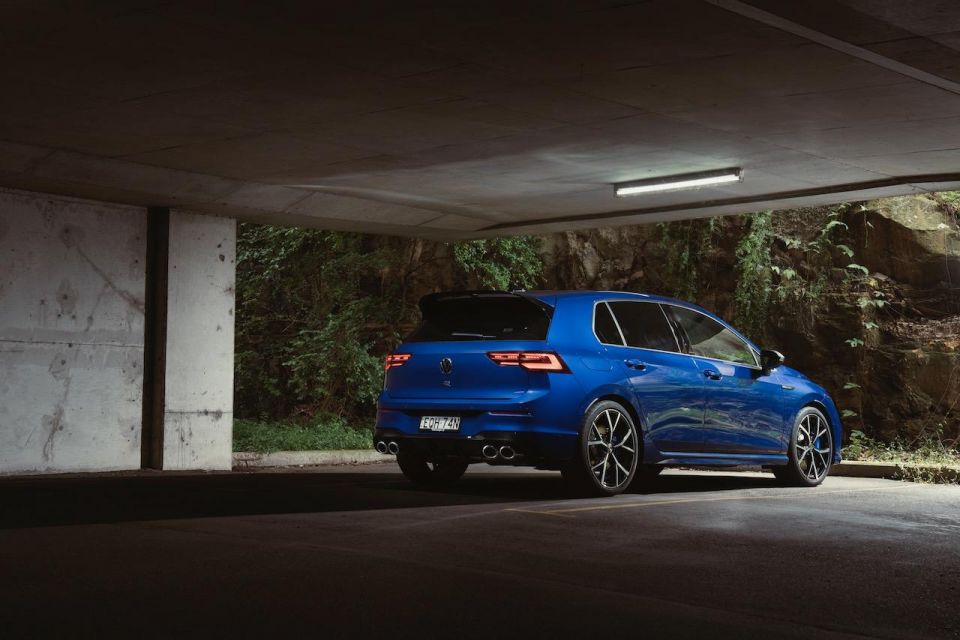
Click the images for the full gallery
Where expert car reviews meet expert car buying – CarExpert gives you trusted advice, personalised service and real savings on your next new car.
Anthony Crawford is a CarExpert co-founder and senior presenter with 20+years in automotive journalism and content creation.


William Stopford
2 Days Ago
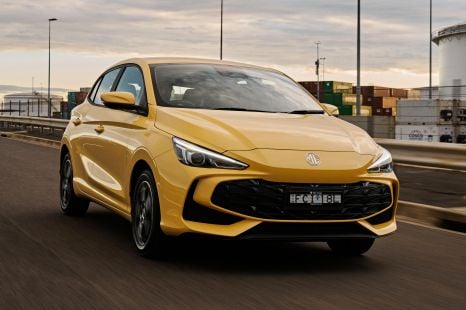

William Stopford
4 Days Ago
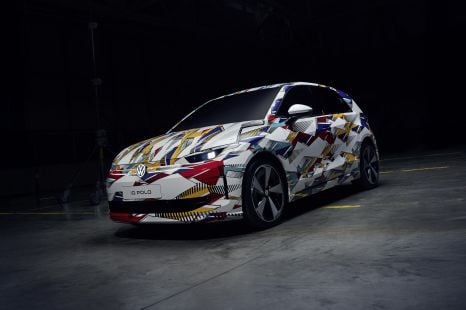

James Wong
10 Days Ago
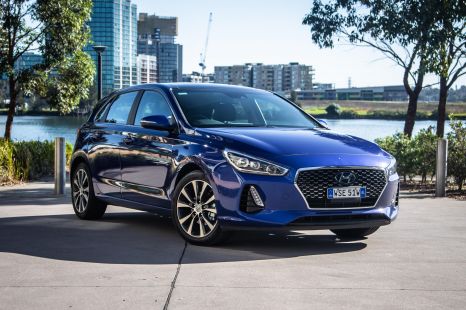

William Stopford
12 Days Ago
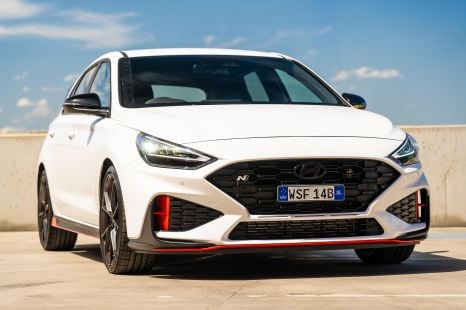

William Stopford
13 Days Ago
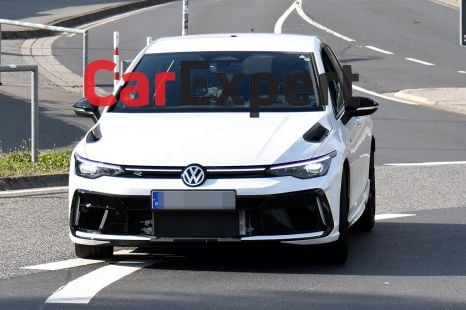

Damion Smy
17 Days Ago